60 hectares of plantations and floodplain forest destroyed
42°51’3787″N 75°12’5427″E
On February 18, a large fire broke out near Tokmak, 51 kilometers along the Bishkek-Torugart highway. According to the press service of the Ministry of Emergency Situations, a forest strip and reeds were burning. According to the Ministry of Emergency Situations, a wooden support of the power line burned down, leading to a power outage in part of the village of Meenetkech; there were no casualties or injuries from the fire. More than 60 hectares of plantations and fields were also affected by the flames. The causes of the fire are being investigated, as well as the extent of the damage caused. According to eyewitnesses, the fire was caused by a "traditional" burning of reeds.
The growing concern not only among ecologists but also among ordinary concerned citizens is linked to the systematic wildfires and illegal logging of trees and shrubs in the floodplain of the Chu River, in the area of the Bishkek-Tokmok bypass road.
Every year, the areas burned increase, and the length of the completely burned sections is now measured not in meters but in kilometers. Along the Issyk-Kul highway, the blackened and charred trunks of once-mighty trees ominously "adorn" the landscape. Sea buckthorn and other valuable plants are gradually disappearing, while reeds thrive: the more they are burned, the faster they spread from the remaining root system.
Due to deforestation and fires, the floodplain forest resources of Kyrgyzstan have been severely depleted, and the forests are gradually degrading into territories poor in species and value. The uppermost, most valuable layer of soil—the humus, rich in microorganisms and various insects—is being burned away. Many species of plants and trees are on the brink of extinction. The forest litter is completely destroyed, and meadow and weed species are invading the undergrowth of the floodplain forest.
With the fires, a huge amount of smoke is released into the atmosphere, containing dangerous pollutants: carbon dioxide; carbon monoxide; nitrogen oxides. Each ton of material burned in the forest releases up to 16 kg of smoke particles into the atmosphere. Local residents suffer from harmful substances.
Even with the naked eye, it is visible that the shoreline has already receded several meters towards Kyrgyzstan in several places and has even begun to undermine the highway. Emergency bank reinforcement works have had to be carried out multiple times, redoing embankments and installing concrete barriers—this results in additional multi-million losses for the country. Another example is that floodplain forest areas can withstand the same spring floods of rivers and prevent water from entering populated areas. And for this, it is not necessary to build dams; it is enough to preserve the floodplain.
But the problems for Kyrgyzstan do not end there. The Chu River, as is known, is not only a transboundary water artery but also a border river. One bank belongs to the neighboring Republic of Kazakhstan, while the other belongs to Kyrgyzstan. As a result of the disappearance of green plantings, the bank is being eroded by river waters and then unexpectedly collapses. Due to the destruction of the shoreline, the river gradually changes its course, diverting additional territories to neighbors and reducing the territory of our country.
According to experts, in the quarter-century since gaining independence, the scale of environmental destruction has surpassed the intensity of nature degradation over the preceding half-century period. In the 1950s, I could not reach the river due to impenetrable thickets; today they have become bald. The state needs to be concerned about creating a floodplain forest service. This is absolutely a small amount of money compared to what is later required to eliminate the consequences of fires.
In Kyrgyzstan, there are many various services, agencies, and departments, but there is no floodplain forest service. It is said that there is a lack of human resources, meaning specialists. Therefore, we do not even have standards developed for a forester or gardener. This means that no one is responsible for all these troubles. Specialists lean towards the necessity of adequate monitoring of the state of the Chu River floodplain. Existing forest accounting work, despite its importance, does not provide a complete assessment of their condition as ecosystems.
On February 18, a large fire broke out near Tokmak, 51 kilometers along the Bishkek-Torugart highway. According to the press service of the Ministry of Emergency Situations, a forest strip and reeds were burning. According to the Ministry of Emergency Situations, a wooden support of the power line burned down, leading to a power outage in part of the village of Meenetkech; there were no casualties or injuries from the fire. More than 60 hectares of plantations and fields were also affected by the flames. The causes of the fire are being investigated, as well as the extent of the damage caused. According to eyewitnesses, the fire was caused by a "traditional" burning of reeds.
The growing concern not only among ecologists but also among ordinary concerned citizens is linked to the systematic wildfires and illegal logging of trees and shrubs in the floodplain of the Chu River, in the area of the Bishkek-Tokmok bypass road.
Every year, the areas burned increase, and the length of the completely burned sections is now measured not in meters but in kilometers. Along the Issyk-Kul highway, the blackened and charred trunks of once-mighty trees ominously "adorn" the landscape. Sea buckthorn and other valuable plants are gradually disappearing, while reeds thrive: the more they are burned, the faster they spread from the remaining root system.
Due to deforestation and fires, the floodplain forest resources of Kyrgyzstan have been severely depleted, and the forests are gradually degrading into territories poor in species and value. The uppermost, most valuable layer of soil—the humus, rich in microorganisms and various insects—is being burned away. Many species of plants and trees are on the brink of extinction. The forest litter is completely destroyed, and meadow and weed species are invading the undergrowth of the floodplain forest.
With the fires, a huge amount of smoke is released into the atmosphere, containing dangerous pollutants: carbon dioxide; carbon monoxide; nitrogen oxides. Each ton of material burned in the forest releases up to 16 kg of smoke particles into the atmosphere. Local residents suffer from harmful substances.
Even with the naked eye, it is visible that the shoreline has already receded several meters towards Kyrgyzstan in several places and has even begun to undermine the highway. Emergency bank reinforcement works have had to be carried out multiple times, redoing embankments and installing concrete barriers—this results in additional multi-million losses for the country. Another example is that floodplain forest areas can withstand the same spring floods of rivers and prevent water from entering populated areas. And for this, it is not necessary to build dams; it is enough to preserve the floodplain.
But the problems for Kyrgyzstan do not end there. The Chu River, as is known, is not only a transboundary water artery but also a border river. One bank belongs to the neighboring Republic of Kazakhstan, while the other belongs to Kyrgyzstan. As a result of the disappearance of green plantings, the bank is being eroded by river waters and then unexpectedly collapses. Due to the destruction of the shoreline, the river gradually changes its course, diverting additional territories to neighbors and reducing the territory of our country.
According to experts, in the quarter-century since gaining independence, the scale of environmental destruction has surpassed the intensity of nature degradation over the preceding half-century period. In the 1950s, I could not reach the river due to impenetrable thickets; today they have become bald. The state needs to be concerned about creating a floodplain forest service. This is absolutely a small amount of money compared to what is later required to eliminate the consequences of fires.
In Kyrgyzstan, there are many various services, agencies, and departments, but there is no floodplain forest service. It is said that there is a lack of human resources, meaning specialists. Therefore, we do not even have standards developed for a forester or gardener. This means that no one is responsible for all these troubles. Specialists lean towards the necessity of adequate monitoring of the state of the Chu River floodplain. Existing forest accounting work, despite its importance, does not provide a complete assessment of their condition as ecosystems.

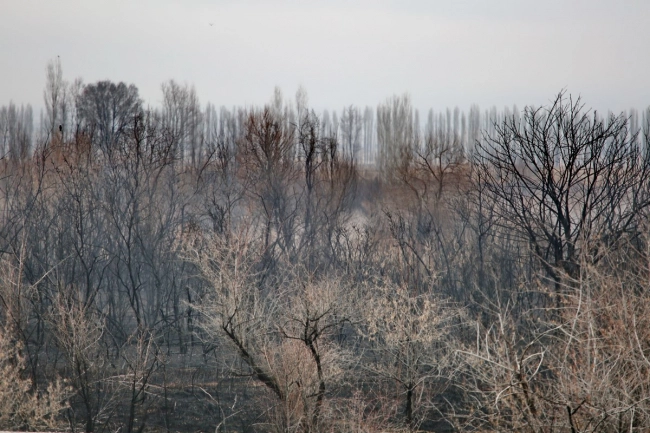



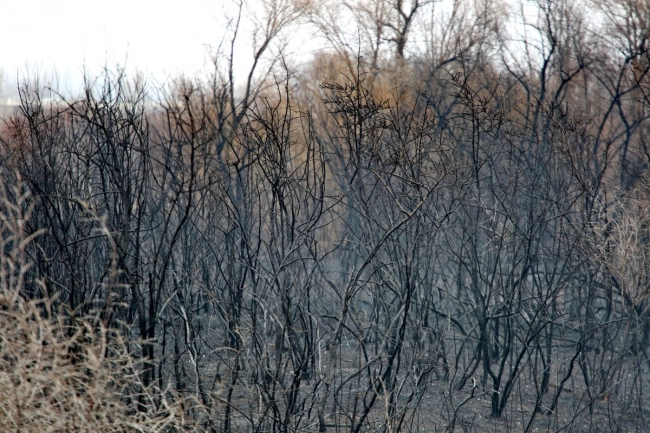
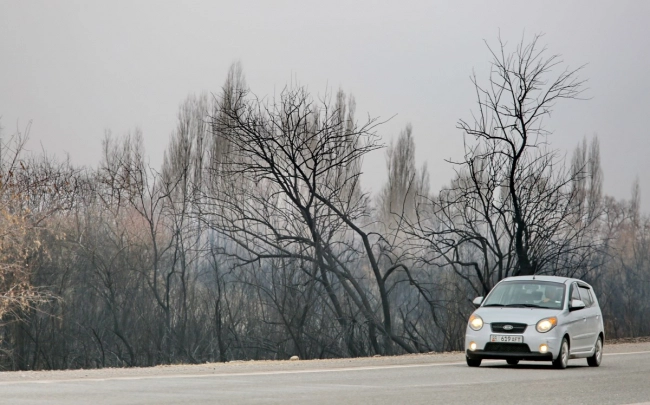
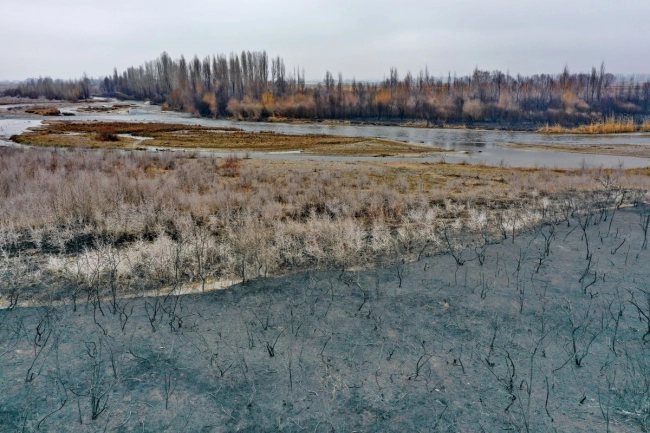
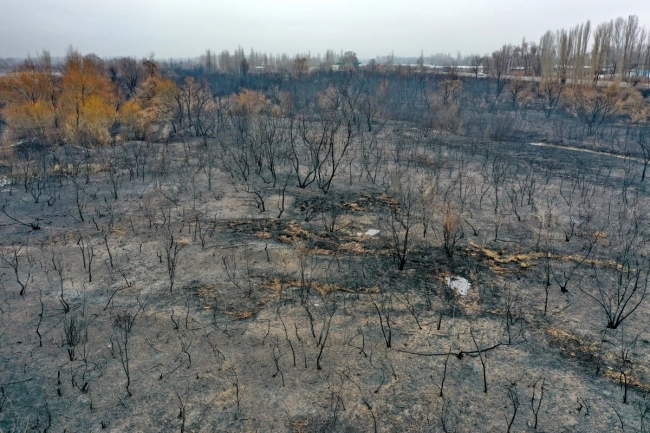
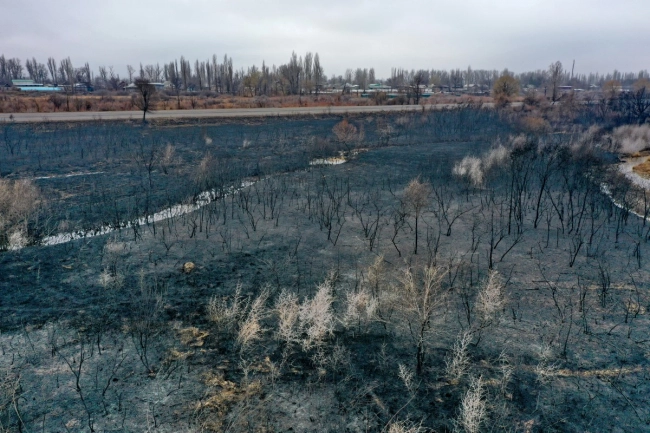
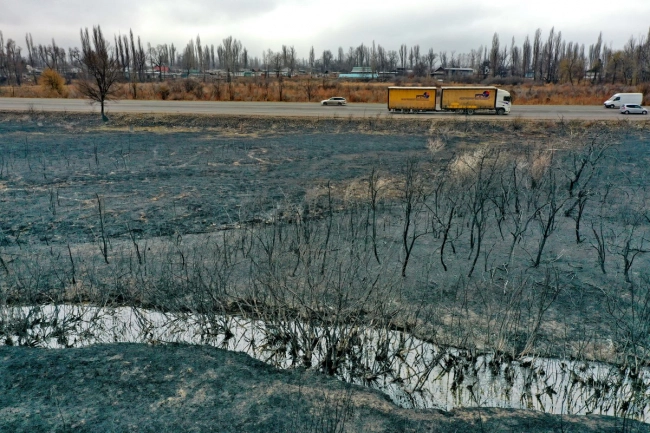
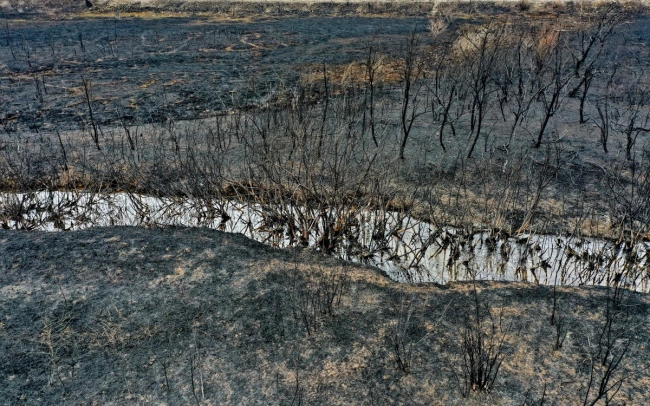
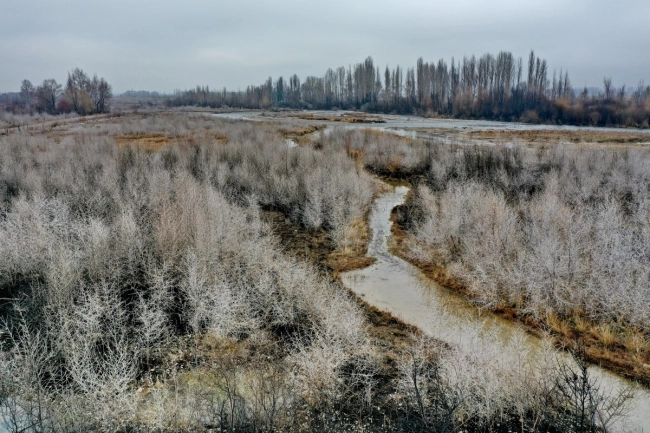
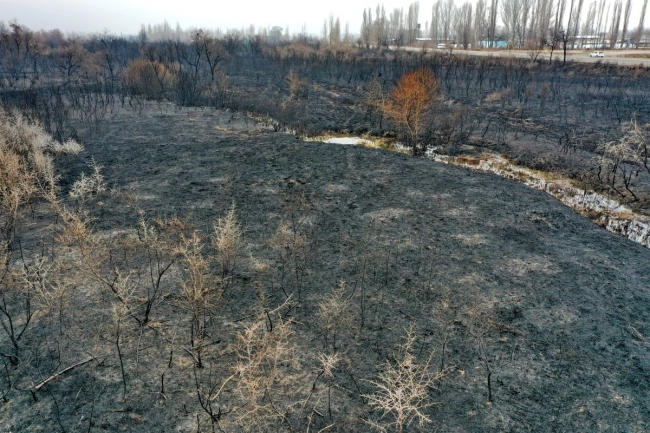
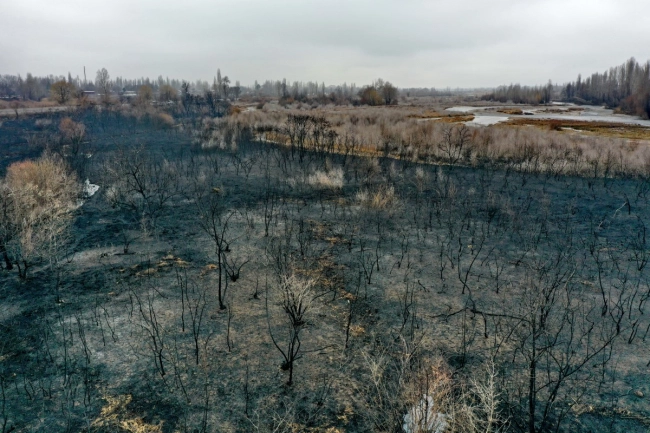
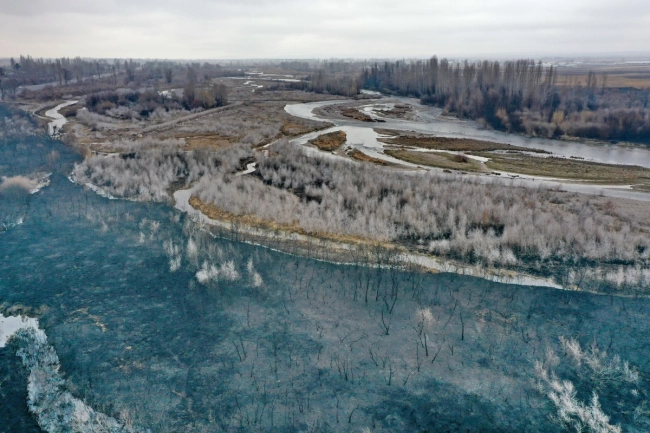


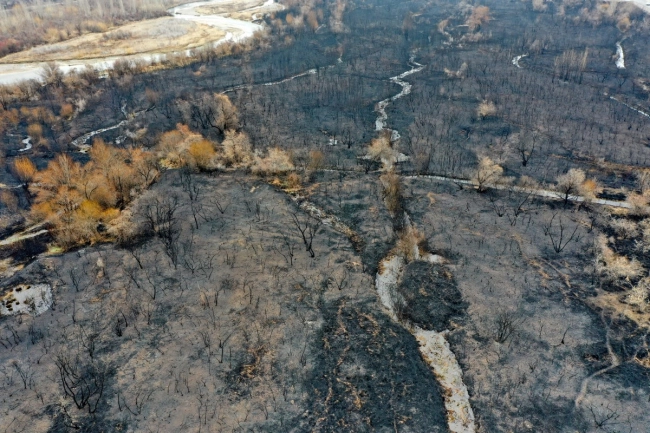
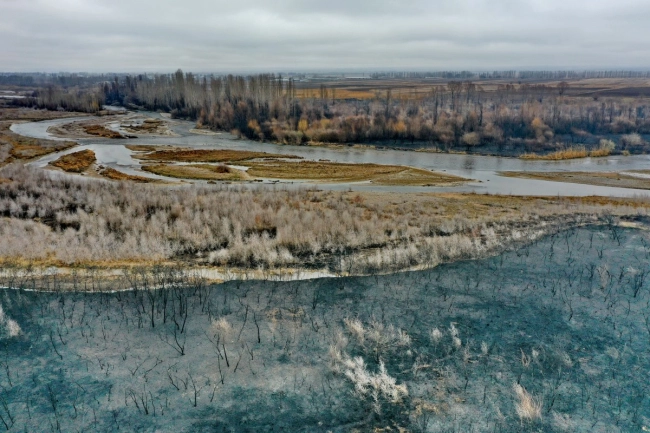

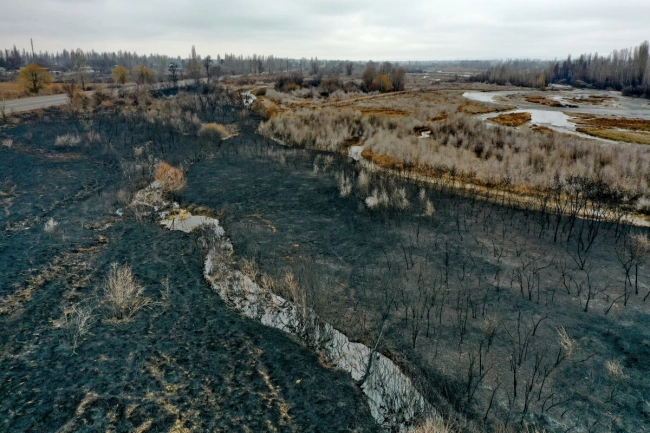
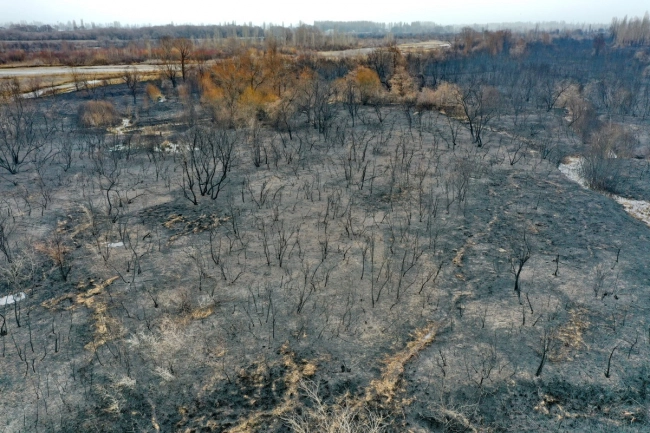


















Attention: Information based on submitted complaints